Upgrading Laptop RAM: A Complete Guide to Boost Performance
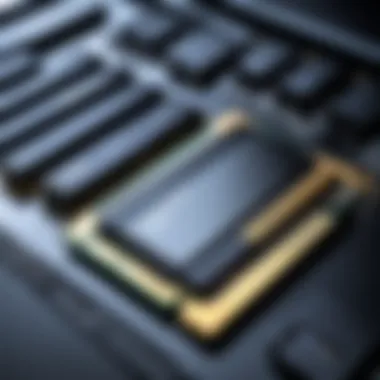
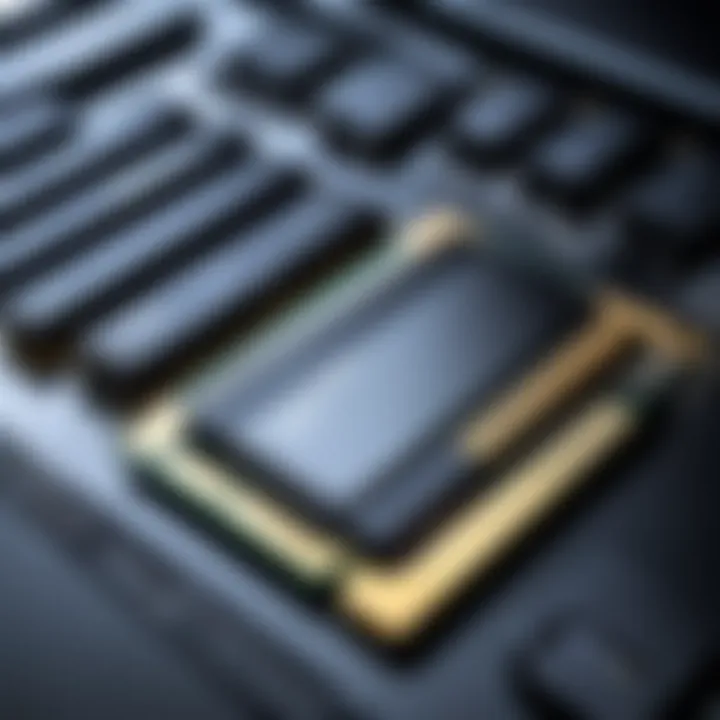
Intro
In today’s fast-paced digital landscape, the demand for efficient computing is higher than ever. One of the simplest yet most effective ways to boost your laptop's performance is by upgrading its RAM. Memory is the unsung hero in any computing system, playing a crucial role in how quickly applications run and how smoothly multitasking is handled. By enhancing your laptop’s memory, you can unlock an entirely new level of productivity.
Upgrading RAM is not just about stuffing more memory into your machine; it’s about understanding the kind of memory your laptop needs, compatibility, and how much enhancement you can realistically achieve. From gaming enthusiasts to creative professionals, everyone stands to benefit from a thoughtful memory upgrade. This guide aims to demystify the ins and outs of the process, so let’s explore the fundamental aspects you need to consider.
Foreword to Laptop RAM Upgrades
Upgrading the RAM in a laptop isn’t just akin to adding some sprinkles on top of an already good cake. It’s more like baking the whole cake again from scratch and making it fluffier. In today’s fast-paced digital environment, where multitasking has become more than a mere convenience, upgrading your RAM is essential to keep up. Whether it's for gaming, graphic design, or just keeping a dozen browser tabs open without a hitch, having adequate RAM can make or break your laptop's performance.
The importance of this topic lies in the fact that many users overlook the benefits that come with a RAM upgrade. This section dives into the why behind the upgrade process. Underestimating the role RAM plays can lead to frustrating moments, like lagging applications or slow boot times. If you use demanding applications or often have multiple tasks running, upgrading RAM might just be the lifeline your laptop needs.
Key Elements of Laptop RAM Upgrades
- Understanding the Basics: Knowing what RAM is, and its function within your laptop's ecosystem sets the stage. It's crucial to grasp the concept before diving headfirst into an upgrade.
- Performance Boost: A RAM upgrade can lead to noticeable enhancements in your laptop’s overall speed. Imagine replacing a runner's old sneakers with a fresh pair; that can be a good comparison.
- Compatibility: Before making any upgrade decisions, understanding your laptop's specifications is vital. It’s like making sure your new shoes will fit before you buy them.
Benefits to Consider
- Efficiency in Multitasking: A higher RAM capacity allows for smoother switching between applications. Gone are the days of applications crashing as you try to move between tasks.
- Longevity of Your Device: An upgrade can breathe new life into your older laptops, making them relevant in a world full of rapidly advancing technology. It’s a bit like giving an old car a new engine to keep up with modern traffic.
Ending
In the broad scope of enhancing your laptop's performance, understanding RAM upgrades is foundational. They represent not just a technical tweak but also a practical approach to ensuring that your device serves you well into the future. As we delve deeper into the various aspects of this topic, you’ll come to see that a little knowledge goes a long way. So, buckle up; it's time to explore the realms of RAM upgrades.
Understanding RAM: Definition and Function
In the realm of laptops, the terms we toss around can sometimes feel like jargon, but each word carries weight, especially when we talk about RAM. Understanding the ins and outs of this essential component is crucial for anyone looking to boost their laptop’s performance. RAM, or Random Access Memory, serves as a short-term data storage area where a laptop stores active tasks and data for quick access. This is vital because when you’re multitasking, running applications, or playing games, RAM is the backbone that keeps everything running smoothly.
What is RAM?
At its core, RAM is a type of volatile memory, meaning it loses its contents when the power is turned off. It functions similarly to your desk during a busy workday: the more space you have (or the more RAM you have), the more files and folders can be displayed at once without creating a mess. Most laptops come with a set amount of RAM, often 4GB or 8GB, but depending on your needs, this can often feel a bit cramped. Understanding RAM involves grasping its role: it is the bridge that connects the processor and storage, facilitating fast access to information. Think of it like a fast-moving highway that lets data zoom, as opposed to the slower roads that might represent storage drives.
The Role of RAM in Laptop Performance
There’s no sugar-coating it—more RAM generally translates to better performance under various scenarios. When you look at how RAM affects laptop performance, picture this: you’re working on a document, streaming a video, and having multiple browser tabs open—all at the same time. If your laptop has enough RAM, it can juggle those tasks like a seasoned performer in a circus. However, if the RAM is limited, your system will slow down, not unlike a traffic jam on a bustling road.
Here are some specific elements that highlight the role of RAM in increasing the performance:
- Multitasking: Sufficient RAM is essential for running multiple applications concurrently without lag. Each open program demands a portion of memory. When there’s not enough RAM, your laptop may start to swap data with the slower hard drive, causing noticeable delays.
- Application Load Times: More RAM can expedite loading times for software. You might find that intensive programs, like video editing or gaming software, function smoother with an adequate amount of available memory.
- Future Ready: Having ample RAM increases your laptop’s lifespan. As software evolves and demands rise, your machine will remain competent if you’ve future-proofed it by upgrading.
"More RAM not only speeds up tasks; it sets the stage for an uninterrupted workflow that can really elevate your productivity."
In sum, grasping the definition and function of RAM provides a foundational understanding that empowers users to make informed choices when considering upgrades. Whether you're a gamer pushing the limits of your device or a professional needing robust multitasking capabilities, knowing RAM's role in overall laptop performance positions you for success.
Benefits of Upgrading RAM
Upgrading the RAM in your laptop can seem like a trivial task. However, it can actually yield significant improvements that affect how you use your device daily. Historically, many users treat RAM as an afterthought, focusing instead on storage space or processor speed. Yet, RAM plays a pivotal role in determining how smoothly programs run, how efficiently tasks are handled, and ultimately, how enjoyable the overall user experience is. Here are some benefits that showcase why upgrading your RAM is worth considering.
Improved Multitasking Capabilities
Imagine you're working with a dozen tabs open in your web browser, streaming music, and perhaps even running a video editing software in the background. If your laptop struggles to handle this load, you're likely experiencing lag time, which can be frustrating. A sufficient amount of RAM can significantly improve multitasking performance. When you increase your RAM, you create more virtual space for your system to utilize, allowing more applications to run simultaneously without a hiccup.
Typically, increased RAM elevates your ability to switch between applications instantly. For instance, if you're engaged in intensive graphic design work, an upgrade from 8GB to 16GB might mean the difference between waiting ten seconds for your program to load or having it open almost immediately. Users often find that with improved multitasking capabilities, their productivity blossoms, leading to a more efficient workday.
Enhanced Application Performance
Consider how heavy-duty applications like Adobe Photoshop or video editing programs require a fair amount of system resources. Upgrading RAM can lead to a more fluid experience. Applications can access the data they need more quickly, eliminating those annoying delays that can break your creative flow. Besides, when you’re working on complex tasks, extra RAM can allow the software to utilize the resources it needs without coming to a crawl.
You might find that games, too, experience smoother gameplay after a RAM upgrade. Modern games often demand a hefty amount of memory, and increasing your RAM can lead to enhanced graphics and seamless transitions. This can transform a choppy user experience into something that feels immersive and engaging. Ultimately, improved application performance means you're able to accomplish more in less time, which is a win-win for anyone with a busy schedule.
Future-Proofing Your Device
With technology advancing at breakneck speed, devices often become outdated sooner than we'd like. However, increasing your RAM can serve as a smart way to future-proof your laptop. Many applications and operating systems continually evolve, regularly raising their minimum RAM requirements. By opting to upgrade your RAM now, you may avoid a complete system overhaul later.
A good example is software updates for operating systems. For instance, Windows 10 requires a minimum of 4GB of RAM to run efficiently, but running intensive applications will almost certainly warrant more. Upgrading your RAM now can keep your laptop relevant, ensuring it remains capable of handling future demands.
In summary, investing in a RAM upgrade is not merely about enhancing speed; it’s about expanding the potential of your device. The ability to multitask, the improved performance of applications, and the strategy of preparing for future demands can make the decision to upgrade RAM a wise investment in a world where convenience and efficiency matter more than ever.
"An upgrade in RAM is not just an enhancement; it’s an investment in utility and longevity for your laptop."
With those benefits in mind, it's clear that considering a RAM upgrade is a sensible step to realize the full potential of your computing experience.
Assessing Compatibility Before Upgrading
When it comes to upgrading your laptop's RAM, compatibility is a critical factor that cannot be overlooked. Choosing RAM that is incompatible with your existing hardware can lead to disappointing results or, worse, an unusable laptop. This section aims to guide you through the essential steps in assessing compatibility to ensure a smooth upgrading process.
Identifying Your Laptop Model
Understanding your laptop model is the first step in successful RAM upgrades. Different manufacturers and models have specific requirements for compatible RAM. Whether you have a Dell, HP, Lenovo, or Asus laptop, each device might feature unique specifications that dictate what kind of RAM can be used. You can usually find your laptop model by checking the bottom of the device or through system settings.
Once you have that information, visiting the manufacturer's website will often provide detailed specifications. Additionally, using tools like CPU-Z can help you retrieve vital system information without diving into the physical machine.
Checking Maximum RAM Capacity
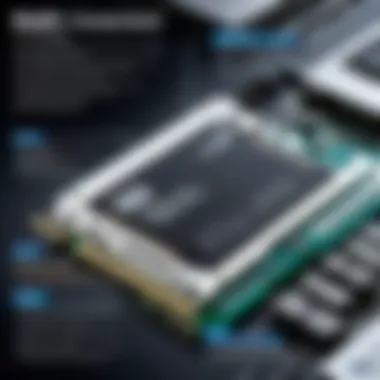
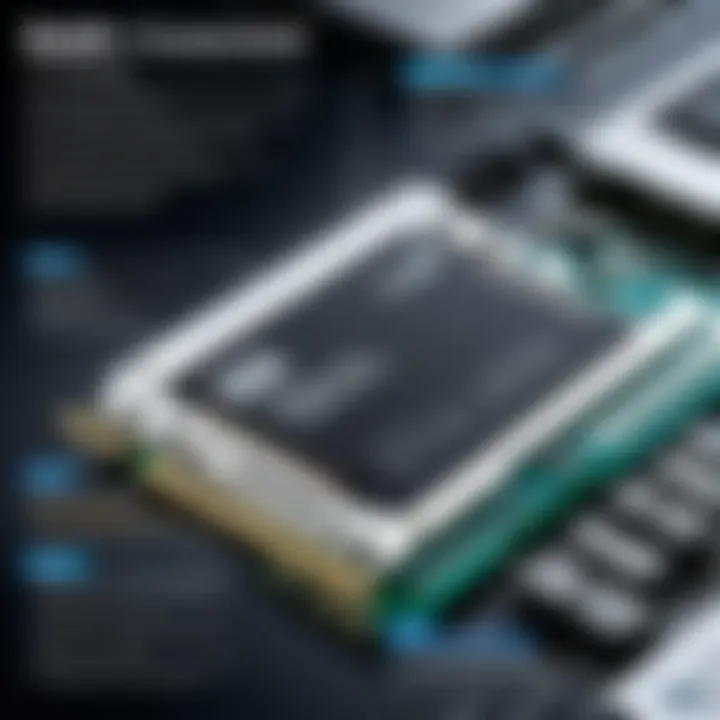
Not all laptops are created equal when it comes to the amount of RAM they can support. Every laptop has a maximum RAM capacity that it's designed to handle. This limit can be determined through the laptop's specifications, which are usually available on the manufacturer's or third-party websites. It's essential to ensure that the RAM you are looking to buy does not exceed this capacity, as exceeding it won’t do you any good.
Most modern laptops come with 8GB or 16GB as standard but might support much higher capacities depending on the motherboard design. For example, some gaming laptops may allow upgrades of up to 32GB or even 64GB of RAM to cater to high-performance needs.
Understanding RAM Types (DDR3, DDR4, etc.)
Another crucial aspect to comprehend is the type of RAM your laptop supports. The two most common types of RAM found in laptops are DDR3 and DDR4. While DDR4 RAM is faster and more efficient than its predecessor, it’s not backward compatible. This means if your laptop uses DDR3, trying to install DDR4 modules won’t work.
To identify the RAM type, you can use system information tools like Speccy or again, consult the laptop's specifications through its model number. Being well-informed about your RAM type not only aids in selecting the right components but also plays a significant role in maximizing your laptop’s performance.
It’s not just about adding more RAM; it's about adding the right RAM that your system can utilize efficiently.
In summary, assessing compatibility before upgrading RAM is essential for ensuring that your laptop runs smoothly post-upgrade. Identifying your model, checking maximum RAM capacity, and understanding RAM types will guide you effectively in making the right choices. This lays the groundwork for a successful upgrade, ensuring you can enjoy the benefits of enhanced performance without a hitch.
Choosing the Right RAM for Your Laptop
Selecting the right RAM for a laptop is like hunting for the perfect piece of gear in a toolbox; it’s about fit and function. It’s not just about adding more memory – it’s about finding what works best with your existing setup. Getting RAM that’s compatible can prevent a world of headaches, ensuring everything operates smoothly. Opting for the correct type not only enhances performance but also diminishes the likelihood of errors or slowdowns.
When you consider upgrading, you might feel overwhelmed by the range of options available. However, knowledge is power. Focusing on compatibility, speed, and capacity are crucial steps that can guide your decision-making process.
Manufacturer Recommendations
Most laptop manufacturers provide specific guidelines regarding RAM upgrades. Often, these recommendations are based on extensive testing and should be taken seriously. For instance, if you own a Dell XPS 13, Dell may recommend certain RAM brands or types that have proven reliability.
It's essential to adhere to these suggestions for a variety of reasons:
- Performance Assurance: Manufacturers often tailor their hardware for specific performances. If you opt for RAM that doesn’t match their specs, you might lose out on optimal speed.
- Warranty Protection: Using compatible parts recommended by the manufacturer generally protects original warranties. Going outside this range could void your warranty.
- Stability: Proprietary RAM or those recommended by the brand often undergo rigorous testing to ensure stability with existing components.
Take note: before purchasing RAM, always check well-known manufacturer websites or user forums for specific guidelines regarding your laptop model. A little research can save you a lot of trouble down the line.
Brand Comparisons and Reviews
When diving into RAM options, the brand you choose can significantly impact your laptop's performance. Not all RAM is created equal. Brands like Corsair, Kingston, and Crucial not only offer multiple types of RAM but also different performance tiers. Think of them like different levels of a video game – each has unique qualities and strengths.
While well-recognized brands tend to be trustworthy, evaluating user reviews can help shape your understanding of performance.
Several points to consider when comparing brands include:
- Performance Ratings: Look at benchmarks and real-world performance tests. Certain brands consistently perform better under heavy loads.
- User Feedback: Customer reviews on retailers like Amazon or tech forums like Reddit can provide invaluable insights. It's true that feedback from people who’ve walked that path can highlight potential drawbacks or advantages.
- Warranty and Support: A solid warranty can indicate a brand's confidence in their product. Plus, responsive customer service is invaluable if something doesn’t go as planned.
Therefore, don’t just pick the RAM on a whim. Be methodical. Compare brands, read reviews, and consider reaching out to fellow users on platforms like Reddit for firsthand experiences. The more informed you are, the better your choice will be.
Preparing for the Upgrade Process
Preparing for the upgrade process is more than just a task on your to-do list; it’s a vital step that sets the stage for a smooth and successful RAM enhancement experience. Before you start taking apart your beloved device, it is crucial to understand that this phase addresses both technical and practical considerations. It is about ensuring you have everything you need while fostering an environment that minimizes errors and avoids any unnecessary hiccups.
First, let’s think about the benefits. When you prepare properly, you mitigate potential risks. If you've ever tried to assemble a complex puzzle without first examining the pieces, you know how frustrating it can be. Just like with that puzzle, knowing what tools you need and what steps to follow can save you a great deal of trouble later on. Having the right approach can also enhance your confidence, making you feel more at ease while handling delicate components of your laptop.
Gathering Necessary Tools
The first step in preparing for the upgrade—gathering the right tools—might feel time-consuming at first, but it pays off immensely. You don't want to find yourself halfway through the upgrade only to discover you lack a screwdriver or an anti-static wrist strap. So let's take a look at what you should have ready:
- Screwdriver Set: A set that includes Phillips and flat-head screwdrivers. Most laptops tend to use Phillips screws, but it doesn’t hurt to have options.
- Anti-Static Wrist Strap: This is essential. A simple static shock can fry your new RAM. It’s better to be safe than sorry.
- Plastic Pry Tools: These are helpful when it comes to opening up the casing without damaging it. Metal tools can easily scratch or dent your laptop.
- Good Lighting: Sometimes, the tiniest features can make or break the installation. Having sufficient lighting will help you see what you're doing.
- Clean Workspace: Dust and small particles can be the enemy. A neat working area that is free from debris is essential for keeping your components safe.
Once you have these tools in hand, it’s time to move to the next critical step: safely backing up your data.
Safely Backing Up Your Data
Backing up your data isn’t just a good idea; it’s a mandatory practice when you're adjusting hardware like RAM. Though upgrading RAM usually doesn't cause data loss, the potential for accidents exists—particularly if you're inexperienced or working hurriedly.
Consider the following points for effective data backup:
- Identify Important Files: Take stock of everything you’ve got. Documents, images, videos—ensure they are not left to chance.
- Use Reputable Backup Solutions: Cloud-based options like Google Drive or Dropbox are handy, but it’s also wise to create a local backup on an external hard drive. This dual approach provides a safety net.
- Create a Full System Backup: Utilizing software like Macrium Reflect or Acronis True Image can be useful. They clone your entire hard drive, so you would have everything ready should something unexpected happen.
This practice not only protects your files but also gives you peace of mind. Losing your data is a bitter pill to swallow, especially when it could’ve been avoided.
At the end of the day, taking the time to prepare thoroughly can significantly impact your upgrade journey, paving the way for a more seamless and less stressful experience. Being well-prepared means you can focus more on the task than worrying about what could go awry.
Step-by-Step Guide to Upgrading RAM
Upgrading the RAM in your laptop is a process that can feel daunting for many. However, this step-by-step guide simplifies what can seem like a complicated endeavor. Having a clearer understanding of each step, both novices and tech-savvy individuals can tackle this task confidently. This section emphasizes the necessity for approaching the upgrade with care. A methodical examination of each phase is crucial to ensure a successful memory enhancement, ultimately leading to improved performance of your device.
Opening Your Laptop
To kick off the upgrade process, the first order of business is to get inside your laptop. You can't just rip it open like a kid on Christmas morning. Begin by gathering your toolkit that generally includes a small screw driver, a plastic spudger, and maybe an anti-static wrist strap if you’re feeling particularly cautious.
Once you're armed and ready, shut down your laptop completely and unplug it. Remove the battery if possible. Most modern laptops have compartments with screws at the back, sometimes you might find that these are concealed under rubber feet or stickers, so a keen eye is needed here. A gentle twist of the screwdriver will usually do the trick to expose the inner workings of your machine. Remember that patience is key; all good things take time.
Locating RAM Slots
Now that you’ve successfully opened the laptop’s back panel, you need to pinpoint those all-important RAM slots. Depending on the laptop model, RAM slots can be situated in various ways. Some models will have a dedicated compartment for the RAM, while others might require you to navigate through a maze of hardware.
Typically, RAM slots are long and slender, often covered by a metal shield or a dust cover. They might be directly visible upon opening, but in others, the hard drive might be taking up valuable real estate. Look for any labels on the motherboard; these often indicate where components are located. Once you’ve identified your RAM slots, it’s time to prepaire for the next step.
Removing Existing RAM (If Necessary)
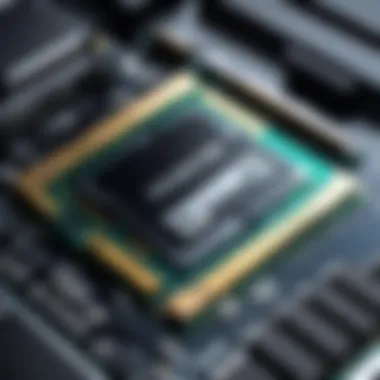
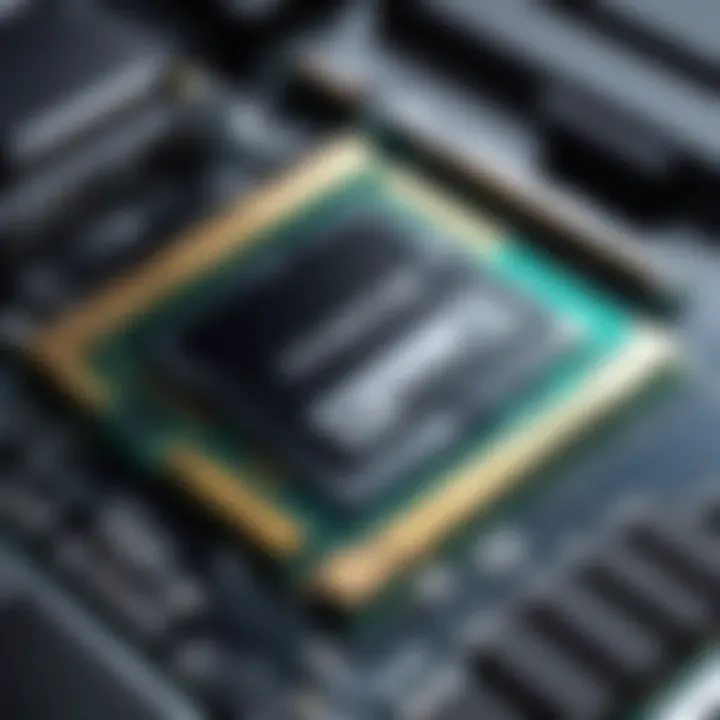
If you've got RAM to swap out, let’s get to the nitty-gritty of removing the old modules. First, you’ll want to gently shift the clips on either side of the RAM stick outwards. A bit of finesse goes a long way here; forcing anything could lead you down a road of regret. When the clips spring open, the RAM will tilt up at an angle, making it easier to grasp and pull out.
Be cautious when handling the RAM to avoid damaging the pins. If you’re feeling particularly anxious about static electricity, tapping an unpainted metal surface can help ground you before you dive into the computer’s innards.
Installing New RAM Modules
With the old RAM out of the way, it’s now time for the moment we've all been waiting for: installing the new RAM modules. Hold the new RAM stick by its edges, steering clear of the connectors to avoid smudging them. Insert the RAM at a 30-degree angle into the slot, ensuring that the notch in the RAM aligns with the tab in the slot.
Once it's seated correctly, push down firmly until the clips click back into place, securing the RAM snugly. Don’t force it, but if you’re applying moderate pressure and it’s not budging, take a moment to double-check alignment.
Reassembling the Laptop
Now that the new RAM is in its rightful place, it’s time to put everything back together. Start by replacing the back cover in the reverse order of how you removed it. Take care to line the screws back up, tightening them gently but firmly. It’s easy to feel eagerness to test it out, but double-check that everything is in its place before plugging it back in and powering it up.
Ensure all other connections, like the battery if applicable, are snug. With everything restored to its former glory, you are just moments away from reaping the rewards of your hard work.
Post-Upgrade Considerations
After successfully upgrading your laptop's RAM, the journey doesn’t just end with the hardware swap. Post-upgrade considerations are crucial to ensure everything runs smoothly. With memory upgrades, it’s like tuning a race car; you don’t just bolt on a new engine and hit the track. You have to make sure the vehicle is optimized for that engine.
Testing RAM Functionality
First things first: ever heard of the old adage, "If it ain't broke, don't fix it"? Well, post-upgrade, you want to ensure that it’s indeed not broken after all that effort. Testing RAM functionality involves confirming that the new memory is recognized and operates as intended. You can use tools like Memtest86 or Windows Memory Diagnostic. These software solutions run a series of checks. If all looks good, it signifies your installation was successful. Here’s a simple approach to this:
- Download and Install Testing Software: Get your hands on Memtest86 from the official site.
- Create a Bootable USB: Use a USB stick to make it a bootable drive.
- Restart Your Laptop: Access the boot menu by pressing a specific key (often F2, F10, or Esc) during startup.
- Run the Test: Let it check the RAM for errors.
If it throws any errors, you might need to check whether the RAM is seated correctly. Sometimes, a loose connection can cause misbehavior. Errors here can also hint at compatibility issues—different RAM brands or types might not play well together.
Adjusting BIOS Settings (If Required)
Once you’ve established that the RAM functions correctly, you might need to venture into BIOS territory. No need to sweat, though. Adjusting BIOS settings can sound intimidating, but it might be necessary, especially if your laptop is not recognizing the full capacity of the new RAM. Sometimes, the system defaults need a gentle nudge to acknowledge its new hardware.
- Access the BIOS: Restart your laptop and hit the dedicated key during startup. It’s usually something like F2 or Delete.
- Navigate to Memory Settings: Look for a tab labeled Advanced or similar.
- Check Memory Frequency and Timings: Ensure these settings align with the specifications of your new memory sticks.
- Save and Exit: After making adjustments, ensure you save changes before exiting.
The BIOS acts as the bridge between your hardware and the operating system. A tweak here ensures that the operating system has the correct information to utilize the new RAM fully.
Monitoring System Performance
Finally, keep an eye on performance as you settle back into your daily tasks. After an upgrade, it’s vital to gauge if the improvements are in line with your expectations. Using monitoring tools such as Task Manager or Resource Monitor can help you track RAM usage during your regular activities. Here’s what to look for:
- Application Performance: Open several applications simultaneously to see if performance remains stable. Launch resource-heavy programs and observe response times.
- System Resource Utilization: Check where most of the memory is allocated. This can inform whether you might need further upgrades or if applications require adjustments.
Was the upgrade worth it? You can also consider using benchmarking software to objectively assess improvements. Ideally, performance should feel more snappy, and multitasking should no longer make your laptop feel like it’s wading through molasses.
"Upgrading RAM is not just about adding more memory; it’s about enhancing your overall user experience."
Taking these post-upgrade steps will assure you that the upgrade not only went off without a hitch but also allowed you to maximize your laptop's potential.
Troubleshooting Common Issues
Upgrading RAM is often a straightforward process, but like any technical endeavor, it comes with its own set of potential challenges. Understanding how to troubleshoot common issues that may arise can save a lot of headaches down the road. This section aims to equip you with the knowledge to diagnose and resolve these problems efficiently. After all, a seamless upgrade isn't just about installing new memory; it's about ensuring that everything plays nice together once the dust settles. Let's dive into some of the frequent troubles you might encounter after enhancing your laptop's memory.
Laptop Fails to Boot
One of the most alarming issues following a RAM upgrade is when your laptop refuses to boot. This might manifest as a black screen, flickering lights, or ominous beeps. These signals are often a cry for help from the system. When this happens, the first thing you should do is breathe. It could be a simple oversight.
Check to see if the RAM was seated correctly. Sometimes the modules don't lock in well, especially if you were in a rush. Remove the new RAM and carefully reinstall it, ensuring the notches align perfectly with the slots. Also, make sure you didn’t accidentally disconnect anything else during the upgrade. If the problem persists, consider reverting to the original RAM to determine if the new stick is faulty or incompatible.
RAM Not Recognized by the System
If your system boots but doesn't acknowledge the newly installed RAM, it can feel like hitting a wall. This is often a compatibility issue between the RAM and your laptop, particularly regarding type and speed. Check your specifications against what you’ve installed.
- Here’s a quick checklist to follow:
- Verify the RAM type (e.g., DDR3, DDR4).
- Ensure the speed matches or is supported by your laptop.
- Check if you maximized the RAM correctly; if you're installing two sticks, ensure they are from a similar family.
Sometimes updating the BIOS can help recognize the new memory. However, approach this step with caution, as incorrect BIOS updates can lead to a myriad of other challenges.
Performance Issues Post-Upgrade
So, you've installed your RAM, and you expect your system to hum along like a well-oiled machine, but instead, you're noticing sluggishness or apps crashing unexpectedly. This situation can be frustrating, particularly when you've invested time and money into the upgrade.
First off, ensure that the new RAM is properly recognized in the system settings. Look at the task manager to see if the memory usage aligns with what you expect. If it appears that the RAM is underutilized, there might be background applications or processes working hard against the system.
Moreover, sometimes simply cleaning up your operating system by removing unnecessary programs can free up considerable resources. Remember, adding RAM does not improve performance if the software running on the system isn’t optimized.
Evaluating the Upgrade Impact
Evaluating the impact of a RAM upgrade is essential for anyone considering investing in enhanced memory for their laptop. When you put your hard-earned cash into new hardware, you want to know how it’ll change your experience. Upgrading RAM is not just about increasing numbers; it’s about understanding the nuances of how that added memory interacts with your favorite applications and overall system performance.
One of the key elements to consider is how memory capacity translates into practical benefits. More RAM can notably improve your ability to multitask, allowing for smoother transitions between applications without the dreaded lag. It’s not just theory; it becomes apparent when launching heavy programs, like graphic design software or games, where every second counts.
Additionally, users should look into the specific use cases of their devices. A gamer might feel the difference more acutely than someone who primarily uses their laptop for word processing or browsing. Hence, evaluating this impact should align with your personal or professional computing needs.
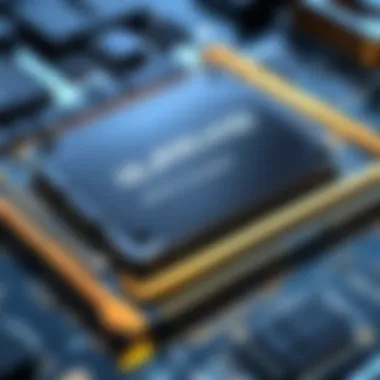
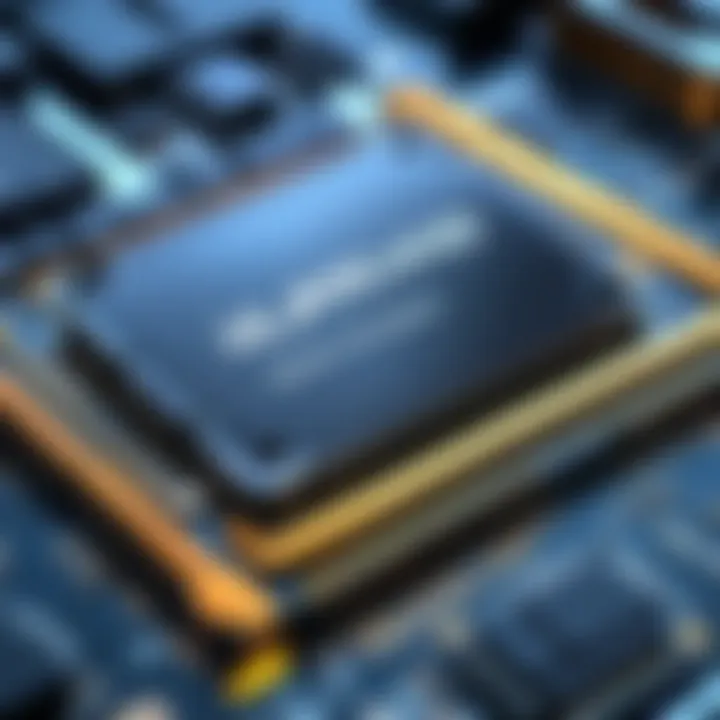
Lastly, keep in mind that performance gains can also depend on other hardware components. A strong CPU or a fast SSD can complement your new RAM effectively, further amplifying your improvements. The upgrade impact isn’t solely isolated to RAM; it’s a domino effect involving multiple components.
"A single upgrade can breathe new life into older machines, making them feel new again!"
Benchmarking Performance Improvements
Benchmarking after a RAM upgrade helps to quantify the actual performance improvements you’ve achieved. This can be done using various software tools designed to test system capabilities like UserBenchmark, PassMark, or Cinebench. These programs will allow you to compare your laptop's performance before and after the upgrade.
- Gather Baseline Metrics: Before you upgrade, record baseline metrics of your system's performance. Take note of memory speed, load times, and frame rates in any demanding applications you regularly use.
- Run Benchmarks Post-Upgrade: Repeat the benchmarks after swapping out the RAM. Compare the data with your baseline to see clear, quantifiable improvements.
- Look for Patterns: Certain applications may benefit more from additional RAM than others. For instance, video editing programs might show significant load time improvements, while basic applications like text editors may not reflect drastic changes.
These assessments can give you a tangible sense of your upgrade's value, guiding future tech purchases or upgrades.
User Experience Observations
User experience plays a pivotal role in evaluating the success of a RAM upgrade. It often goes beyond what the numbers show on benchmarks. Users frequently report noticeable differences in how their laptops feel after an upgrade. Tasks that seemed sluggish may now be smooth and responsive.
Consider the everyday scenarios:
- Quick App Launch: With additional RAM, opening applications becomes snappier. Instead of waiting with bated breath for Photoshop or your game to load, it now happens in the blink of an eye.
- Smooth Multitasking: Ever found yourself staring at the spinning wheel while switching between Chrome tabs? A RAM boost often eliminates that frustration, allowing for seamless transitions.
- Creative Workflows: For designers or developers, the experience during tasks like rendering graphics or compiling code can drastically change. Increased RAM means less time twiddling your thumbs while the machine catches up with you.
It’s an entire package, really. It’s about feeling more productive and less restricted by technology. Keeping an eye on subjective user experience, alongside objective benchmarks, gives a fuller picture of the benefits gained from upgrading laptop RAM.
Cost Considerations for RAM Upgrades
When it comes to upgrading RAM, the price tag can sometimes feel like a drop in the ocean—or a gaping hole in your pocket, depending on your perspective. Understanding the economics involved in RAM upgrades helps you make wiser decisions. Let’s face it: in today's fast-paced tech world, having the right amount of memory can be the difference between a smooth experience and that dreaded spinning wheel of doom. Hence, evaluating the cost considerations for RAM upgrades is not just a smart move, it's essential for optimal laptop performance.
A well-planned upgrade can save you from purchasing a new laptop, which is a hefty financial commitment. In many cases, adding more RAM to an existing laptop can lead to noticeable improvements in performance without breaking the bank. It’s crucial to overlook the immediate financial outlay, but instead, consider the value it provides in the long run.
"Investing in RAM is like putting fertilizer on your garden; you might not see the effects right away, but your performance blossoms over time."
Budgeting for Components
So, where does one start when budgeting for RAM upgrades? It's not just about the price of the RAM itself. Sure, that’s an important factor, but several additional costs can creep in like uninvited guests at a party.
- Type of RAM: Different types of RAM come at various price points. DDR4 could generally cost more than DDR3 due to better performance and efficiency. Make sure you know which type your laptop requires.
- Warranties and Return Policies: Buying RAM from a reputable seller can save you headaches if you need to return or swap the component. Check if the vendor has a solid return policy that doesn’t leave you stranded.
- Additional Tools: Depending on how hands-on you choose to be, you might require tools for opening up your laptop or thermal paste for enhancing thermal performance. Keep these potential expenses in the back of your mind.
- Professional Installation: If DIY isn’t your style, consider the cost of hiring a professional. They might charge a fee for installation, but this is often worthwhile to avoid potential pitfalls.
Budgeting shouldn’t just cover the purchase; think of all these variables to get a realistic figure.
Evaluating Cost-Effectiveness of Upgrading
Next up, after setting your budget, it's paramount to evaluate whether the investment you’re making is cost-effective. When contemplating whether upgrading RAM is worth it, several aspects bear consideration:
- Performance Gains: If a RAM upgrade can breathe life into an aging laptop, the costs may be justified. Users often report smoother multitasking and improved load times. Take note of benchmarks and reviews that highlight performance changes.
- Usage Needs: If you’re not strutting along the tech road with demanding software or multitasking, oodles of RAM might not be necessary. Consider what's running on your machine and if your needs warrant the upgrade.
- Longevity: Investing in higher RAM can extend the lifespan of your device. If your laptop can perform faster and accept upcoming software demands, it saves you the need for a new device sooner.
Before you pull the trigger on that shiny new RAM stick, make sure it aligns with your long-term goals and needs.
In summary, while considering RAM upgrade costs might seem like a daunting game of numbers, approaching it informed can help you make the right choices. Being diligent about budgeting can pave the way for enhanced performance, and knowing your cost-effectiveness can justify your decision in the grand scheme of your laptop’s life.
When to Consider Professional Help
In the realm of laptop upgrades, particularly with RAM, many tech enthusiasts find themselves at a crossroads. On one hand, the promise of improved performance beckons with the shimmer of new memory modules. On the other, the complexity of installation can leave even the most dedicated DIYer feeling a bit out of their depth. Thus, knowing when to call in the professionals is key.
When contemplating an upgrade, it’s vital to gauge your confidence and competence in handling hardware. Upgrading RAM seems straightforward, yet several intricacies lurk beneath the surface. It’s not merely about swapping out sticks of memory; it involves understanding your specific laptop’s architecture, ensuring compatibility, and, in some cases, dealing with tighter configurations or even hardware malfunctions.
Identifying Complex Upgrades
Some upgrades can be trickier than they initially appear. For instance, laptops that boast soldered RAM (a common occurrence with many ultrabooks) don’t allow for traditional upgrades. In such cases, a false sense of security can lead to a frustrating endeavor. Other red flags may include:
- Limited accessibility. If your laptop model requires substantial disassembly, like removing the motherboard or disconnecting a myriad of cables, it may be wiser to let someone with expertise handle it.
- Previous repairs or modifications. If the laptop has been altered before, past modifications might complicate the upgrade and cause unforeseen issues.
- Advanced configurations. If your laptop requires changes to the BIOS settings for the new RAM to be effectively recognized, consider seeking professional insight.
When faced with any of these factors, it’s paramount to weigh the pros and cons of doing it yourself versus hiring a professional. After all, what’s a few dollars for peace of mind when you're dealing with the very heart of your machine's performance?
Benefits of Hiring Professionals
The choice to employ a professional, rather than donning the toolkit yourself, comes with numerous advantages. Here are a few compelling reasons to think about making that call:
- Expertise and Experience. Tech specialists have seen it all. They've tackled a variety of models and their quirks, making them adept at identifying pitfalls that may evade the novice.
- Time-Saving. More often than not, the time spent figuring out how to open your device and understanding RAM specifications can be significant. A professional can complete the job in a fraction of the time.
- Warranty Protection. Many upgrade mistakes have the potential to void warranties. Engaging a professional keeps your device's warranty intact, which can be a lifesaver should issues crop up down the line.
- Peace of Mind. Knowing that an expert is handling your hardware adds a layer of comfort. Should something go awry during installation, a professional often has the remedy in their toolkit right away.
In a nutshell, while upgrading RAM may seem like a straightforward task on the surface, complexities can arise that necessitate outside help. For the tech-savvy who enjoy the thrill of DIY, upgrading might be a breeze. But for those hesitant about their proficiency, enlisting a professional could not only be prudent but also enhance the overall experience.
Final Thoughts on RAM Upgrades
Upgrading RAM in laptops is not just a matter of adding a few more gigabytes; it’s about enhancing the overall computing experience. This section seeks to bring together various threads discussed throughout this guide, underscoring the significance of RAM upgrades and the broader implications for users looking to elevate their laptops' performance. By considering the elements highlighted here, you can make informed decisions that’ll pay dividends down the line.
Long-Term Considerations
When it comes to investing in RAM upgrades, a few key long-term considerations are worth exploring. First off, understand that technology does not stand still. What is cutting-edge today may be obsolete tomorrow. So, when you upgrade, think about the future needs of the applications you frequently use. If you are into gaming, designing, or heavy multitasking, anticipate not just your current requirements, but also what demands might arise in a year or two.
In terms of product lifespan, higher specifications can keep your machine relevant longer. If you thought your laptop was a slouch before, a new RAM module could breathe fresh life into it. Consider the potential halt in performance with regular software updates that demand more resources. With each new version of your favorite applications, extra memory becomes increasingly crucial.
Additionally, the resale value of your laptop could appreciate with more RAM. If you ever decide to part ways with your device, having updated hardware could catch the eye of potential buyers eager for a better deal.
Staying Informed on Future Technologies
The tech landscape is a fast-moving river; what’s in vogue today could easily be swept away tomorrow. Keep your ear to the ground regarding emerging technologies. Enhanced RAM types like DDR5 are gaining traction and promise faster speeds and higher bandwidth. Staying knowledgeable can help you decide whether to hold off on an upgrade or dive in.
Additionally, keeping track of trends in laptop designs and capabilities is vital. Manufacturers are constantly pushing the envelope with innovations that can improve performance while reducing power consumption. You would not want to sink your money into an outdated RAM type just before a new generation hits the market. So, follow tech blogs, discussions on forums like Reddit, or tech sections in major news outlets. A little bit of wisdom from the crowd can go a long way in making savvy decisions.
"The only thing greater than having your laptop run smoothly is the peace of mind knowing you made an informed choice about it."
In summary, the decision to upgrade RAM should be approached thoughtfully. We're not just talking about instant performance boosts; we're discussing longevity, application demands, and market evolution. Taking these factors into account will not only enhance your current user experience but will also set you up for long-term success in the shifting paradigm of technology.







